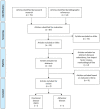Transcranial Magnetic Stimulation (rTMS) on the Precuneus in Alzheimer's Disease: A Literature Review
- PMID: 37759933
- PMCID: PMC10526400
- DOI: 10.3390/brainsci13091332
Transcranial Magnetic Stimulation (rTMS) on the Precuneus in Alzheimer's Disease: A Literature Review
Abstract
The current literature review aimed to evaluate the effectiveness of rTMS on the precuneus as a potential treatment for Alzheimer's disease (AD). Although the number of studies specifically targeting the precuneus is limited, the results from this review suggest the potential benefits of this approach. Future studies should focus on exploring the long-term effects of rTMS on the precuneus in Alzheimer's disease patients, as well as determining the optimal stimulation parameters and protocols for this population. Additionally, investigating the effects of rTMS on the precuneus in combination with other brain regions implicated in AD may provide valuable insights into the development of effective treatment for this debilitating neurodegenerative disorder.
Keywords: Alzheimer; precuneus; transcranial magnetic stimulation.
Conflict of interest statement
A.B., S.M., G.R., R.M., T.D., B.M. and F.F. declare no conflict of interest related to the subject of this article. B.M. is a SYNEIKA (neuronavigation system applied to TMS) shareholder and has served as a consultant for Brainsway.
References
Publication types
LinkOut - more resources
Full Text Sources


